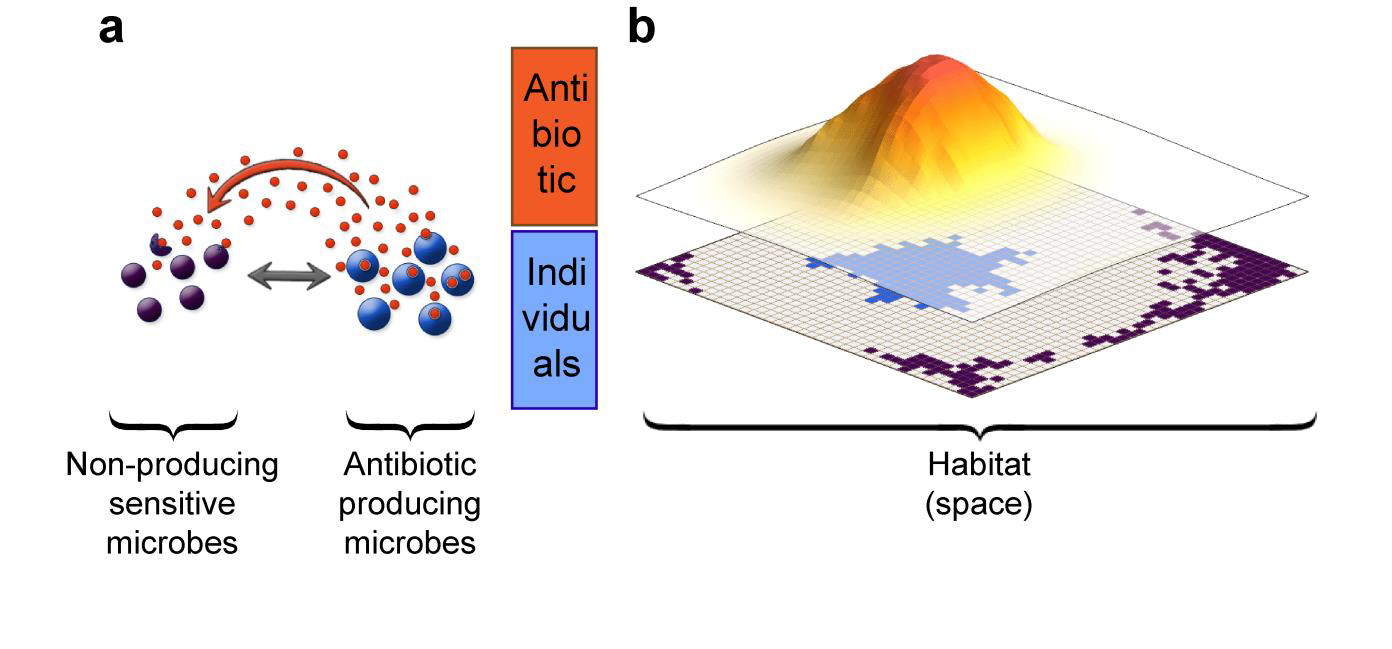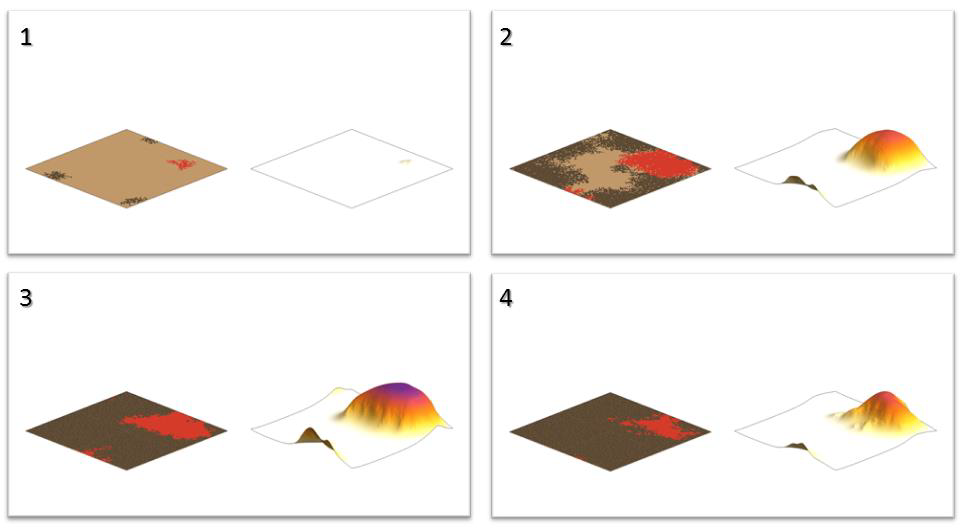Almost all plants, animals, and humans live in close association with different unicellular microorganisms, including bacteria, archaea, fungi, protists, and viruses. The term microbiome refers to the collection of these microorganisms at specific locations, such as on the surface of skin or in the gastro-intestinal systems of the host. Microbiomes are, apparently, not just randomly assembled mixtures of microorganisms from the immense variety and number of individuals in the environment. There seem to be regularities in how such microbiomes are built: what species are involved, in what proportions, and in what functions. Some are essential for the health and survival of the host: besides playing a role in digestion, antibiotic producing species provide a natural protection against harmful microbes. Moreover, a healthy microbiome helps the host to develop immunity and protection from allergic diseases, and can even influence the behaviour of their host. The processes and mechanisms resulting in a well orchestrated assembly of such communities are in the focus of several projects of microbial ecology research.
The host can bias microbial competition to promote the settling and multiplication of beneficial microbes over harmful ones in a vacant area. Microbes which are beneficial for the hosts, for example by protecting the host from parasites with the antibiotics they produce, indeed need special support from their hosts for two main reasons. First, it is very unlikely that from the huge number of species in the environment the right ones will settle down without any help. Second, beneficial microbes produce compounds (including antibiotics) that are costly in terms of energy, material, and time spent producing it. These costs result in slower reproduction and slower growth. It is easy to see that parasites that don’t spend energy and time on producing such compounds, and so can grow and spread much faster, hence winning when in competition. In the meantime, if the concentration of such poisonous compounds reaches a certain level, the invasion and reproduction of sensitive parasitic strains can be prevented.
The interactions and community dynamics of microorganisms are very complex. With the help of HPC provided, Dr Boza and his team are modelling simplified interactions between typical microorganism species, helping to better understand the dynamics between parasitic and beneficial microorganisms when colonising areas. Tracking over time of the properties of microorganisms in the simulation including fitness, traits and behaviour, as well as monitoring the effect of the local environment, has led to new insights. For example, one effective demonstrated strategy of the host was to provide resources which only the beneficial microorganisms could use to grow, giving them a competitive advantage until they formed a colony of sufficient size and strength to be resistant to invasion by the parasites, even without further help from the host.
A typical example of such dynamics can be observed in the case of Acromyrmex; leaf-cutting ants. The surface of newly born ants is consistently inoculated with the same antibiotic-producing bacteria within a 24-hour window after hatching. The ant provides some sort of resource, resulting in the quick growth of colonies before any other microorganisms can invade. Later on, other species can invade, but these bacteria will always be present and provide protection against parasites for the individual and for the whole ant nest for a lifetime.



